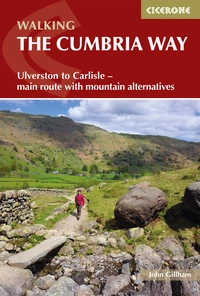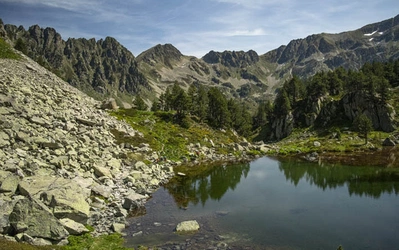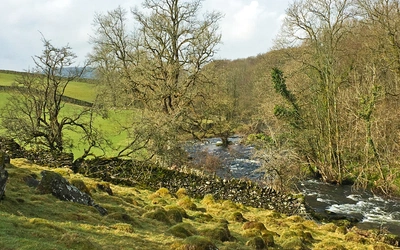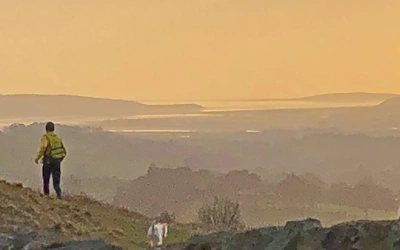Hiking poles: how and when to use them
So, you love hillwalking and you’re reasonably fit, but you’re beginning to realise that you actually prefer walking uphill, and that the downhill bits make your knees hurt – sometimes quite a lot! The steeper and longer the downhill, the worse it feels. You find you tense your leg muscles more, which results in muscle pain AND joint pain at the end of the day. If this sounds all too familiar, then it may be time to consider using walking poles (also called trekking poles), particularly if you are planning a trekking or walking holiday.
Should you use walking poles?
Knee troubles can affect us at any age, and you could argue that the younger you are, the more important it is to ensure that you look after your knees. Modern walking poles are similar to ski touring poles, and their use is becoming increasingly popular throughout the world. They provide extra stability and can lower the amount of stress on your legs and knee joints by taking the weight onto the poles through your arms.
Using walking poles, or even a single pole, will reduce knee pain and increase hill climbing power and endurance. They can also help with balance when crossing soft or boggy ground or when crossing rivers, scree running, and doing other activities which put additional strain on your balance. One of the main disadvantages, however, is that their use increases your total energy expenditure, as you are using your arms to take a lot of the strain. They can also keep your hands full and can get in the way on technical sections when you need to use your hands, such as on ladders and short scrambling sections. Some styles of poles have wrist straps so you can let go if necessary without dropping them.
How to use hiking poles for maximum benefit
To get the maximum benefit from using walking poles, it's important that you hold the poles correctly and that you adopt the right techniques. Firstly, make sure that the grip feels comfortable to you. Thread your hand up through the strap and grip the pole handle with the strap under the palm of your hand. Adjust the strap to keep the hand secure. You can now lean all your weight onto the straps, while your grip on the poles can remain comfortably relaxed. Another school of thought is not to use the straps at all—they can either be ignored or removed. This does mean you have to grip the handle more tightly, but it allows you to drop the poles quickly and easily take a hand off to get something out of your pack or to use your map and compass.
The length of the poles can be adjusted exactly to suit your height and the activity you are doing. Generally speaking, lengthen the poles for descents, and shorten them for ascents. The length for walking along flat or gently slopes should be around waist height, adjusted until you feel comfortable.
The best technique is to place the poles in time with each step. Just naturally let your arms swing in their normal rhythm, place the poles on the ground, and apply load to them as you walk through the step. Good technique quickly brings benefits. If you find your arms are tiring, you either have your poles too long or you are tending to push the pole down rather than using a smooth, flowing movement. Most walking poles are held in the same way, although if you purchase Pacer Poles or similar, then they will have a slightly different grip. You can try a few pairs in the shop and see what you prefer. Don’t worry if it feels a bit odd using the walking poles for the first day or two. You will soon get the hang of it, and the benefits will become apparent really quickly.
What are the best types of walking poles?
There are a number of very good brands of walking poles, and the choice is down to your own preference regarding weight, price, and other aspects such as hand grip angle and material, shock-absorbers, baskets etc.
The main considerations will be the type of walking you will be doing and how comfortable the poles are for you. For longer trekking trips, you will want lightweight poles, but equally, you need to know they will not easily snap or bend under considerable weight. Walking poles with a shock absorber are unnecessary; they just add weight and complexity. In the snow, you'll definitely need snow baskets, but you should take these off in the summer when they're not necessary.
Where should I buy my walking poles?
You cannot beat the careful consideration and advice of outdoor shops for helping you choose a pair of walking poles. We wholeheartedly recommend chatting to someone in your local outdoor shop where they will be happy to share their specialist advice with you.
If you need to shop online make sure that you have read as much as possible about the poles and that you can return them if they don't suit you.
Maybe your knees are fine – why would you need poles? Or perhaps you're a trail runner and have seen people using poles in races. Cicerone's Joe Williams has some advice:
"I only use poles when going uphill. When I am in an mountain ultramarathon, there are many times when you need to walk big uphills, rather than run them. I drive really hard on my poles during long climbs, imagining myself as a four-wheel-drive machine! I've timed it, and there are definitely times when I'm faster walking and using poles than I am running! When running downhill, I prefer not to use them as I like to run more naturally, but some people use them like ski poles to help with turns (remember to take your hands out of the straps for safety). You can even use them while running on flat trails if you're really skilled!"












